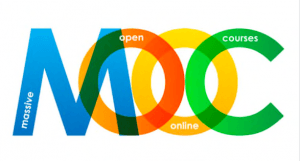MOOCs (Massive Open Online Courses) continue to expand in number and enrolments. In a little over a decade, this growth has been impressive, with student numbers reaching just over 100 million in 11,400 courses in 2019 (you’ll find the 2018 statistics on MOOCs here). But what is meant by ‘massive’?
 My limited search hasn’t revealed a precise number, with most definitions referring to ‘a very large number of people’ (e.g. English Oxford Living Dictionaries). Adding a tad more precision, Ryan Tracey, in defining MOOCs for the eLearning industry, said that “A MOOC is ‘massive’ because it attracts tens of thousands of participants per intake.” There’s a start for us, and I’d accept that for a course to be massive, it should conservatively have at least 10,000 enrolments.
My limited search hasn’t revealed a precise number, with most definitions referring to ‘a very large number of people’ (e.g. English Oxford Living Dictionaries). Adding a tad more precision, Ryan Tracey, in defining MOOCs for the eLearning industry, said that “A MOOC is ‘massive’ because it attracts tens of thousands of participants per intake.” There’s a start for us, and I’d accept that for a course to be massive, it should conservatively have at least 10,000 enrolments.
A simple calculation reveals that the average enrolments per MOOC is currently 8772, well below our minimum number! This is a significant drop from the 2014 estimate of 43,000 students per course. And this makes my case: most MOOCs are OOCs.
Perhaps that’s a bit strong, and should be that ‘there are more OOCs than MOOCs’. Even then, someone may protest that our average is a mean, and with a highly skewed distribution, the median might well be over 10,000. Accepting that it could be the case, what is clear is that average MOOC enrolments are falling fast.
Perhaps that is inevitable, as more institutions join the MOOC bandwagon, and the established players take on courses without the wide appeal of their initial offerings. Further, does it really matter? Well it might, especially as MOOCs have admittedly large dropout rates, with even the more optimistic claiming around 10 per cent completion. So a course that starts with 10,000 students ends with less than 1000 completions, about the size of an average tertiary course.
So what are we left with? The rise of the OOCs!
As a final current note, if you’re a MOOC follower and think the biggest players are Coursera, EdX, and Udacity (or even XuetangX), then think again and read about Goodwill.
